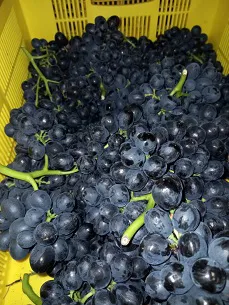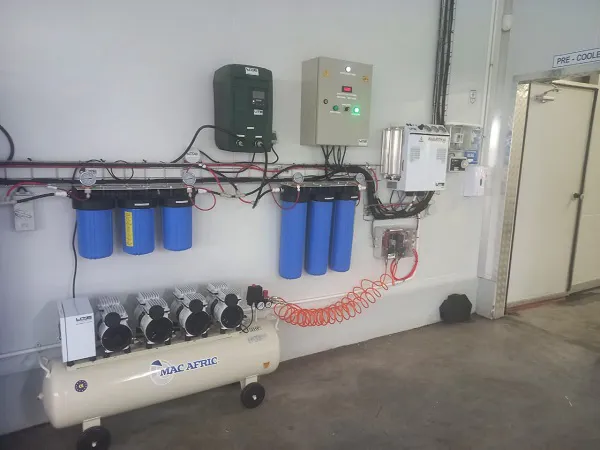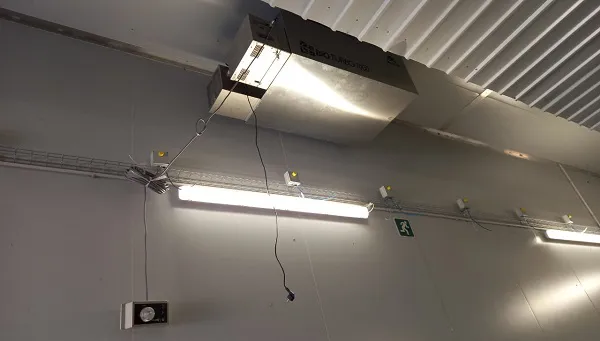 Jan Lievens, a specialist on table grape and fruit postharvest technology in general, has long been advocating for a mindset change to preserve grape quality from the moment the fruit is cut.
Jan Lievens, a specialist on table grape and fruit postharvest technology in general, has long been advocating for a mindset change to preserve grape quality from the moment the fruit is cut.
Right: on table grapes, an objective is maintaining the green stems
He says that has never been more important than now.
“A common thread I’ve been hearing in my conversations with several key players in the industry, in South Africa, Egypt and the Netherlands, is that the prevailing world transport situation is such that a transit time of 55 days from South Africa to the markets is now a harsh reality.”
He continues: “For that you need to implement a detailed and correct postharvest procedure, or you are dead.”
He says that he has heard many reports on the overall mediocre quality of South African grapes on arrival, but in the same breath traders add that the excellent quality grapes that they receive, still command premium prices.
Due to the growing number of international requests for the technology, the decision was made to move away from the traditional African name Umhwebo (which means ‘trading’) and start a company with a more international name: Humiditas, Latin for humidity.
 Relative Humidity installation for pre-cooler and packhouse with water pomp, filtration and two RH controllers with oil-free compressor at a grape packhouse in De Doorns, Western Cape
Relative Humidity installation for pre-cooler and packhouse with water pomp, filtration and two RH controllers with oil-free compressor at a grape packhouse in De Doorns, Western Cape
Humiditas specialises in fruit, vegetable and flower postharvest technology. They are well known for their results with table grapes and also involved with blueberries. The proven postharvest philosophy is working well on pome and stone fruit to alleviate many of the initial quality problems that the farmers are facing.
“Furthermore,” Jan adds, “to ensure the future of the developed successful and proven postharvest philosophy and technologies, the company is attracting international investment interest, since the results and rewards for the farmers are huge with a small investment in technology.”
He has long maintained that growers do not pay enough attention to the cooling and humidity requirements of the harvested fruit and for that reason, his advice to his clients in South Africa and Egypt is to cut grapes and have them in precooling or already receiving cooling within 20 to 30 minutes.
 BIO Turbo 1000 with RH (relative humidity) nozzles during an installation (photos supplied by Humiditas)
BIO Turbo 1000 with RH (relative humidity) nozzles during an installation (photos supplied by Humiditas)
Before the pandemic, he visited across the world to explain the Humiditas postharvest philosophy and in Egypt, where he has been working for a few years, a new project will be operational just in time for their new season, he says.
There is a window of opportunity after harvest on which everything from then on is dependent, Jan says. “The timing between harvest and getting the fruit from the orchard to starting the postharvest process in pre-coolers is of utmost significance. Getting the field heat off in the correct manner as soon as possible is paramount. At this point, relative humidity and airborne bacteria removal in the pre-coolers and pack houses are crucial, it is all about diligence. We leave nothing to chance.”
For more information: Jan Lievens
Jan Lievens
Humiditas
Tel: +27 78 992 2485
Email: jan@humiditas.com
https://www.humiditas.com/
